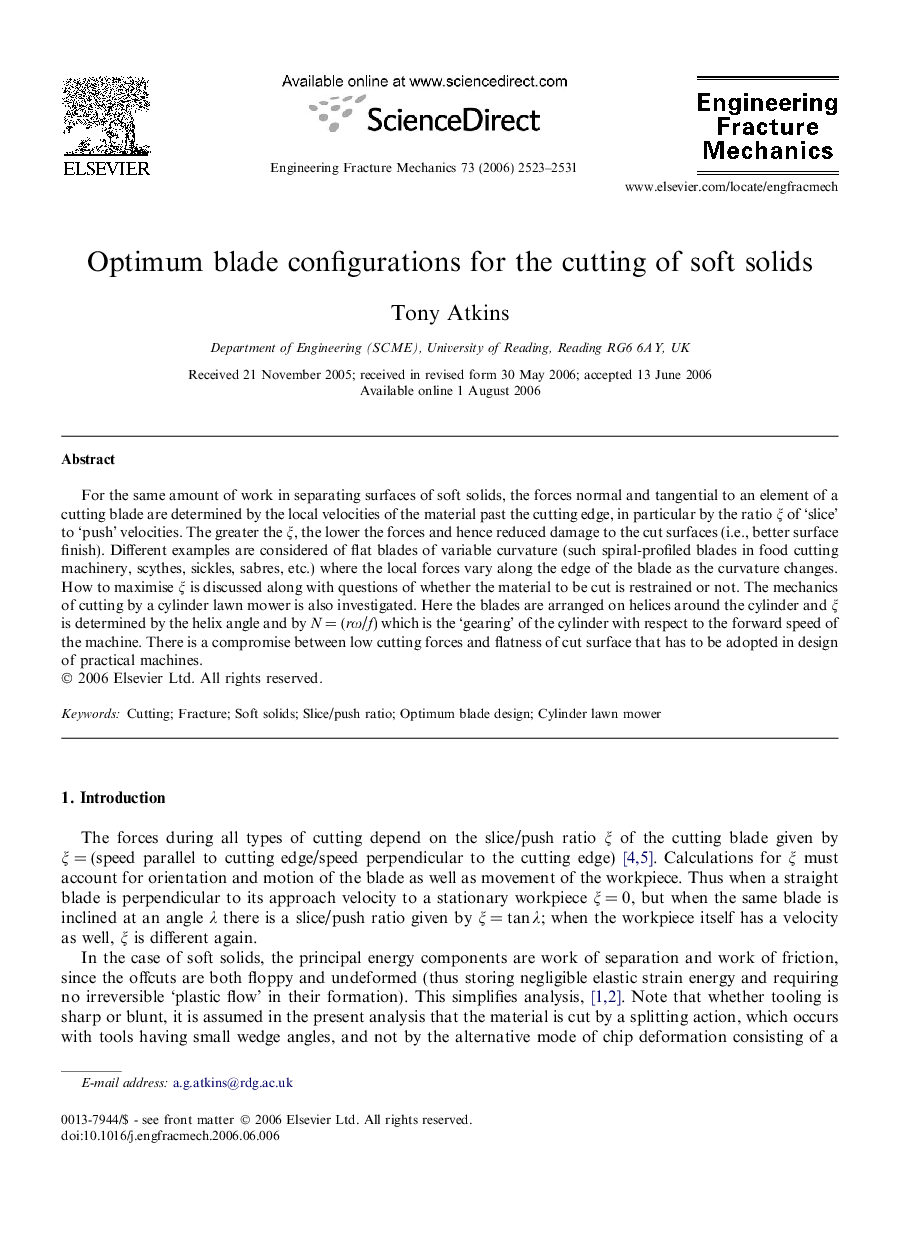| Article ID | Journal | Published Year | Pages | File Type |
|---|---|---|---|---|
| 768180 | Engineering Fracture Mechanics | 2006 | 9 Pages |
For the same amount of work in separating surfaces of soft solids, the forces normal and tangential to an element of a cutting blade are determined by the local velocities of the material past the cutting edge, in particular by the ratio ξ of ‘slice’ to ‘push’ velocities. The greater the ξ, the lower the forces and hence reduced damage to the cut surfaces (i.e., better surface finish). Different examples are considered of flat blades of variable curvature (such spiral-profiled blades in food cutting machinery, scythes, sickles, sabres, etc.) where the local forces vary along the edge of the blade as the curvature changes. How to maximise ξ is discussed along with questions of whether the material to be cut is restrained or not. The mechanics of cutting by a cylinder lawn mower is also investigated. Here the blades are arranged on helices around the cylinder and ξ is determined by the helix angle and by N = (rω/f) which is the ‘gearing’ of the cylinder with respect to the forward speed of the machine. There is a compromise between low cutting forces and flatness of cut surface that has to be adopted in design of practical machines.
